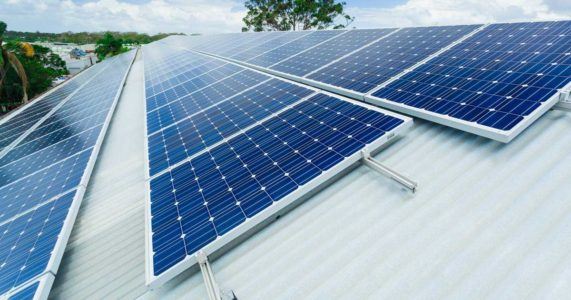
2500 new rooftop PV stations under construction across Iran

According to the portal of Iranian Energy Ministry (known as PAVEN), Jafar Mohammadnejad stated that there are currently about 3500 PV systems operational across the country.
Most of these power stations have been installed in underprivileged areas, the official said.
He put the country’s current installed capacity of renewable power plans at 841 megawatts (MW), saying that all of the mentioned power plants have been established by 115 private companies active in this field.
Mohammadnejad noted that there are 115 large scale (or MW-scale) renewable power plants operating across the country.
He emphasized that the guaranteed purchase price of renewable electricity has increased by about 30 percent, adding that this tariff is especially more attractive for biomass power plants in the northern parts of the country.
The official further noted that 53,420 people are employed annually in the renewable sector.
Back in June, the Director-General of SATBA’s regulatory office, Mojtaba Loni, had said that over 3,200 rooftop photovoltaic power stations were operational across Iran at the time.
“In addition to providing sustainable income for rural households and reducing urban immigration by creating an alternative business in drought-affected regions, installing such solar power stations, has led to a boost in livelihoods of border residents and less developed areas,” Loni said.
According to the Energy Ministry’s data, renewables account for nearly seven percent of the country’s total electricity generation capacity.
Of the country’s total renewable capacity, 44 percent is the share of solar power plants while the share of wind farms stands at 40 percent and small-scalded hydropower plants generate 13 percent of the total renewable capacity.
Overall, in the next five years, Iran is aiming for a 5,000 MW increase in renewable capacity to meet growing domestic demand and expand its presence in the regional electricity market.


Trump weighs using $2 billion in CHIPS Act funding for critical minerals

Codelco cuts 2025 copper forecast after El Teniente mine collapse

Electra converts debt, launches $30M raise to jumpstart stalled cobalt refinery

Barrick’s Reko Diq in line for $410M ADB backing

Abcourt readies Sleeping Giant mill to pour first gold since 2014

Nevada army depot to serve as base for first US strategic minerals stockpile

SQM boosts lithium supply plans as prices flick higher

Viridis unveils 200Mt initial reserve for Brazil rare earth project

Tailings could meet much of US critical mineral demand – study

Kyrgyzstan kicks off underground gold mining at Kumtor

Kyrgyzstan kicks off underground gold mining at Kumtor

KoBold Metals granted lithium exploration rights in Congo

Freeport Indonesia to wrap up Gresik plant repairs by early September

Energy Fuels soars on Vulcan Elements partnership

Northern Dynasty sticks to proposal in battle to lift Pebble mine veto

Giustra-backed mining firm teams up with informal miners in Colombia

Critical Metals signs agreement to supply rare earth to US government-funded facility

China extends rare earth controls to imported material

Galan Lithium proceeds with $13M financing for Argentina project

Kyrgyzstan kicks off underground gold mining at Kumtor

Freeport Indonesia to wrap up Gresik plant repairs by early September

Energy Fuels soars on Vulcan Elements partnership

Northern Dynasty sticks to proposal in battle to lift Pebble mine veto

Giustra-backed mining firm teams up with informal miners in Colombia

Critical Metals signs agreement to supply rare earth to US government-funded facility

China extends rare earth controls to imported material

Galan Lithium proceeds with $13M financing for Argentina project

Silver price touches $39 as market weighs rate cut outlook

















